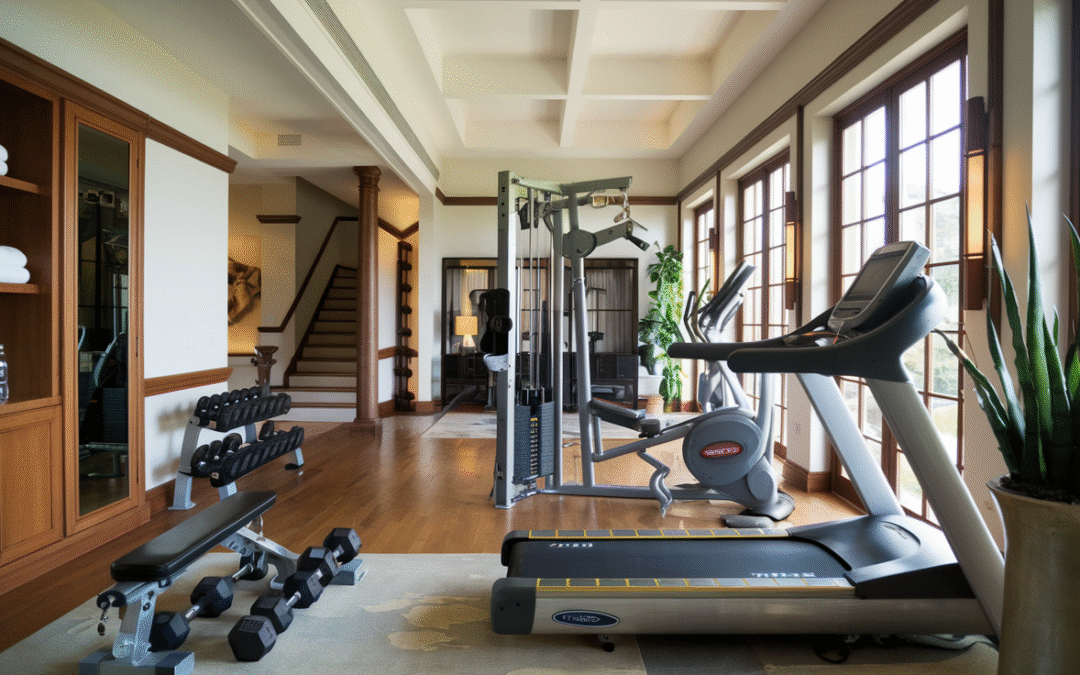How to Plan Home Gyms in Luxury Properties
Designing a luxury home gym is more than just a trend; it’s an investment in personal well-being and property value. For property developers and homeowners in the Bay Area, crafting a gym space that embodies luxury while serving practical fitness needs can be a complex task. But with the right planning and execution, it can be the jewel of any luxury home. At iBuild Design and Construction, our expertise in luxury home gym design ensures we blend functionality with opulence effortlessly. In this guide, we’ll walk you through the essential considerations and strategies to get it right.
Table of Contents
- Understanding the Basics of Luxury Home Gym Design
- Site Analysis and Surveys
- Architectural and Interior Design
- Sustainable and Smart Technologies
- Budgeting and Feasibility
- Meeting Client Needs with Real-World Examples
- Conclusion
- Get Started with iBuild
Understanding the Basics of Luxury Home Gym Design
Creating a luxury home gym begins with understanding the essential components that differentiate a standard gym from a luxury one. High-end finishes, state-of-the-art equipment, and personalized spaces are crucial. However, the heart of luxury lies in customization tailored to the users’ lifestyles and personal preferences. At iBuild, we ensure that the luxury home gym design process is smooth and aligns perfectly with your vision.
Spatial Requirements
An intelligently designed floor plan is fundamental. This means accounting for equipment layout, ample space for movement, and sections for different types of workouts — from yoga and pilates to weightlifting and cardio. Our design services consider these elements for a balanced gym experience.
Equipment Selection
Incorporating top-of-the-line fitness equipment adds both function and aesthetics. Choices may include treadmills with touch screen displays or multi-functional strength trainers that accommodate various workouts. Luxury home gyms often feature brands like TechnoGym or Peloton, known for their innovation and design.
Site Analysis and Surveys
Conducting a thorough site analysis is one of the first steps. iBuild’s team looks into space availability, existing structural conditions, and neighborhood regulations. This ensures the design maximizes the available space without compromising on the home’s structural integrity.
Structural Considerations
This phase involves checking support systems, ceiling heights, natural lighting availability, and any structural adjustments that might be necessary. It’s crucial to collaborate with structural engineers for alterations that require architectural insight.
Architectural and Interior Design
Elevating the aesthetic appeal of a home gym requires careful selection of materials, colors, and overall ambiance. Our expertise in interior design facilitates the creation of visually stunning spaces that inspire motivation and energy.
Material Selection
Choosing high-quality materials such as hardwood floors, bamboo wainscoting, or rubberized flooring not only enhance durability but also offer comfort during workouts. Mirrored walls can create an illusion of space and foster a professional gym environment.
Lighting and Acoustics
Lighting plays a critical role in ambiance. Options range from natural light incorporation through skylights or large windows to customizable LED systems. Acoustic treatments ensure sound systems produce high-quality audio for a more immersive workout experience.
Sustainable and Smart Technologies
The integration of sustainable practices and smart technologies in gym design can significantly enhance user experience and energy efficiency. Incorporating smart thermostats and automated lighting systems can reduce operational costs and the environmental footprint.
Eco-Friendly Features
Utilizing eco-friendly materials such as recycled rubber flooring and low VOC paints maintains air quality and personal well-being. Moreover, energy-efficient HVAC systems ensure comfort without excessive energy use.
Smart Gym Devices
Equipping the gym with smart fitness devices provides enhanced interactivity. Smartphone compatibility, virtual personal trainers, and fitness tracking apps can be integrated to offer a futuristic workout regimen tailored to user preferences.
Budgeting and Feasibility
Determining a realistic budget that aligns with luxury standards and project feasibility is pivotal. iBuild conducts feasibility analyses to help stakeholders understand cost implications and ensure that every dollar contributes to enhancing the gym’s luxurious appeal.
Cost Management
Value engineering allows us to refine project costs without sacrificing style or quality. Early identification of potential financial overruns enables us to adjust designs accordingly.
Financing Options
We guide clients through potential financing options, ensuring all monetary aspects of the project are robustly evaluated. Understanding the regional market and property values helps in strategizing effective budget allocations that enhance both client satisfaction and property value.
Meeting Client Needs with Real-World Examples
One of our clien, in Palo Alto, for example, sought a gym that could host private yoga sessions while accommodating traditional gym equipment. We created a space with mirrored walls, a retractable partition for yoga privacy, and integrated smart tech for personalized workout sessions.
This case illustrates how iBuild’s architect-led approach enhances client-specific results, reaching beyond standard solutions to innovative, adaptable designs.
Conclusion
Designing a luxury home gym requires more than just placing equipment in a room. It’s about crafting a space that aligns with personal lifestyles, enhances property value, and delivers a state-of-the-art workout experience. iBuild Design and Construction embodies these principles in every luxury home gym design we undertake, ensuring your home reflects the very best of personalized luxury.
Get Started with iBuild
Ready to bring your luxury home gym vision to life? Partner with iBuild Design and Construction for unparalleled design-build services that transform aspirations into reality. Visit our contact page to schedule a consultation and explore the possibilities. Let’s create a space where luxury meets fitness.

